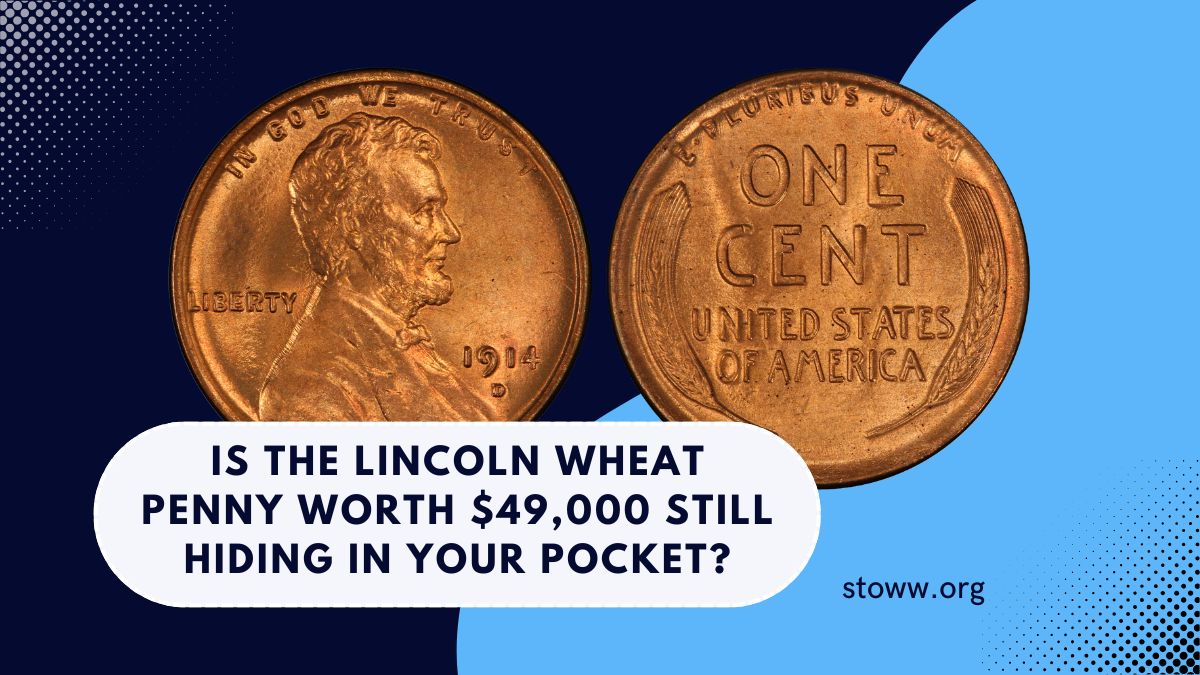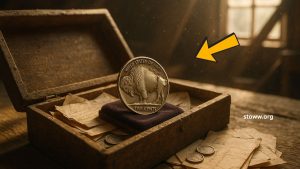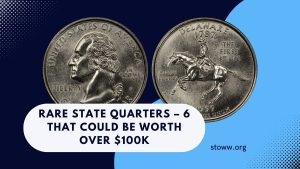The Lincoln Wheat Penny, minted between 1909 and 1958, is a staple in coin collections. While most of these pennies hold minimal value, certain rare varieties can be exceptionally valuable, with some fetching prices as high as $49,000. This article explores these rare pennies, how to identify them, and their potential worth.
Key Rare Lincoln Wheat Pennies
Several specific years and mint marks of the Lincoln Wheat Penny are particularly sought after by collectors due to their rarity and historical significance.
1. 1909-S VDB Penny
- Description: This penny features the initials “VDB” of designer Victor David Brenner on the reverse.
- Mintage: Approximately 484,000 coins.
- Value: High-quality examples can range from $700 to $2,000 or more.
2. 1914-D Penny
- Description: Minted in Denver, this penny is rare due to its low production numbers.
- Mintage: Just over 1.1 million coins.
- Value:
- Fine (F-12): Approximately $200 to $500.
- Uncirculated (MS-60+): Up to $49,000.
3. 1943 Bronze (Copper) Penny
- Description: Due to a minting error during World War II, some pennies were struck in bronze instead of the standard steel.
- Mintage: Extremely rare; only a few known to exist.
- Value: One such penny sold for $1.7 million at auction.
4. 1955 Doubled Die Obverse Penny
- Description: Features noticeable doubling in the date and lettering on the obverse.
- Mintage: Approximately 24,000 coins.
- Value: High-grade examples can be valued between $1,000 and $100,000.
Identifying Valuable Lincoln Wheat Pennies
To determine if you possess a valuable Lincoln Wheat Penny, consider the following steps:
- Examine the Date and Mint Mark:
- Look for key dates such as 1909-S, 1914-D, and 1943.
- Check for mint marks (“S” for San Francisco, “D” for Denver) located below the date on the obverse.
- Inspect for Errors:
- Look for anomalies like doubled die obverses, off-center strikes, or unusual coloration that might indicate minting errors.
- Assess the Coin’s Condition:
- Coins in uncirculated or mint condition are more valuable.
- Evaluate features such as luster, presence of contact marks, and overall eye appeal.
Notable Lincoln Wheat Pennies and Their Values
| Year | Mint Mark | Mintage | Notable Feature | Approximate Value Range |
|---|---|---|---|---|
| 1909 | S | 484,000 | VDB Initials | $700 – $2,000+ |
| 1914 | D | 1,193,000 | Low Mintage | $200 – $5,000+ |
| 1943 | None/S/D | Varies | Bronze Composition | Up to $1.7 million |
| 1955 | None | 24,000 | Doubled Die Obverse | $1,000 – $100,000+ |
Note: Values are approximate and can vary based on coin condition and market demand.
Factors Influencing Coin Value
Several elements affect the value of a Lincoln Wheat Penny:
- Rarity: Limited mintage numbers or unique errors increase a coin’s desirability.
- Condition: Coins graded as Mint State (MS) or with minimal wear command higher prices.
- Historical Significance: Coins marking significant events or design changes are often more valuable.
While the majority of Lincoln Wheat Pennies are of nominal value, certain years and varieties are highly prized by collectors. If you suspect you might have a valuable penny, it’s advisable to consult with a professional numismatist or coin grading service to authenticate and appraise your coin.
Remember, factors such as rarity, condition, and historical significance play crucial roles in determining a coin’s worth.
FAQs
How can I tell if my 1943 penny is valuable?
If your 1943 penny is made of bronze (copper) instead of the common steel, it could be highly valuable. A simple test with a magnet can help; steel pennies will stick to a magnet, while bronze ones will not.
Where is the mint mark located on a Lincoln Wheat Penny?
The mint mark, if present, is found below the date on the obverse side of the coin.
How do I determine the condition of my coin?
Coin condition is graded on a scale from Poor (P-1) to Mint State (MS-70). Factors include wear, luster, and overall appearance. Professional grading services can provide an accurate assessment.



